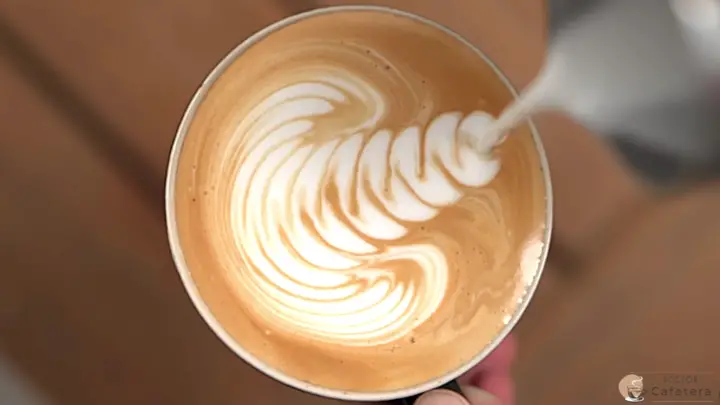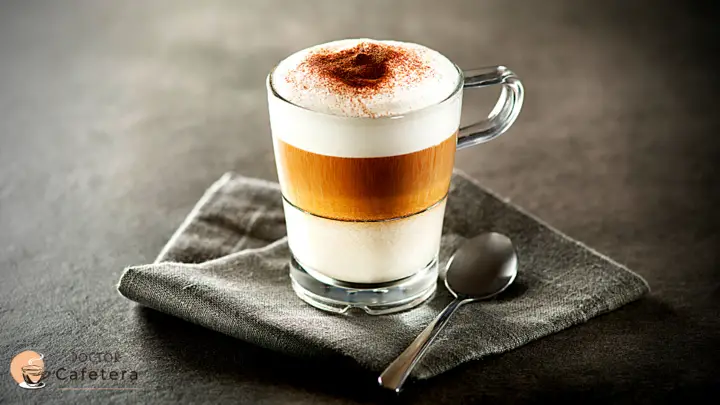The options can be overwhelming when ordering a coffee drink at a café. Among the most popular choices are cappuccino, latte, and latte macchiato, but do we know what sets them apart?
Although these drinks may appear similar at first glance, their preparation and composition vary significantly, resulting in distinct and unique flavor profiles. Moreover, each drink has various interpretations that cater to individual consumer preferences.
In this article, we will delve into the differences between cappuccino, latte, and latte macchiato and break down the preparation process and key ingredients that give each its characteristic flavor. So, you can learn the particulars of each and choose the perfect option for you on your next café visit.
What are cappuccino, latte macchiato, and latte?
To better understand the differences between cappuccinos, latte macchiatos, and lattes, it’s important to have a brief overview of each drink.
While all three drinks are coffee-based and originated in Italy, they differ in their specific ingredients and preparation methods. Let’s look at these drinks and what makes them unique.
Cappuccino
The cappuccino is a classic Italian espresso-based drink with equal parts of espresso, steamed milk, and foam. The name “cappuccino” comes from the Capuchin friars, who wore brown hoods resembling the drink’s color.
The espresso is poured into the cup first, followed by a layer of steamed milk, and finally topped with thick, creamy milk foam. Traditionally, cappuccinos are served in cups that can hold 150-180 milliliters (5-6 fluid ounces) and are enjoyed as a breakfast beverage in Italy.
Latte Macchiato
The latte macchiato is a layered coffee drink made by pouring steamed milk over an espresso. Unlike a cappuccino, where the espresso is added first, the latte macchiato is created by adding steamed milk to the cup and then pouring the espresso on top.
The result is a beautifully layered drink with espresso floating on top of the milk. The name “latte macchiato” literally translates to “stained milk” in Italian, referring to the espresso staining the milk.
Café Latte
The café latte, or simply “latte,” is made by mixing espresso and steamed milk in a 1:3 to 1:5 ratio, with a small layer of foam on top. The milk in a latte is steamed to create a silky, velvety texture and poured over the espresso shot, which is added to the cup last.
Lattes are often served in larger cups than cappuccinos and have a creamier, less intense coffee flavor. They are usually a mid-morning or afternoon beverage and are a popular choice for those who prefer a milder coffee taste.
Differences between cappuccino and latte macchiato

The latte macchiato and cappuccino contain the same ingredients but differ in the amount of milk and foam. The latte macchiato has more milk and a thinner foam layer, while the cappuccino has less milk and more foam.
- To prepare a latte macchiato, one needs one or more espresso shots and a larger amount of steamed milk. After preparing the espresso, the steamed milk is added and incorporated into the espresso as desired. If a creamier drink is preferred, add an extra shot of espresso and pour the steamed milk over the coffee.
- To prepare a cappuccino, one needs one shot of espresso and steamed milk. The milk should be steamed with a frothing wand near the top of the milk to create more foam.
It is important to be careful during the milk frothing process as it affects the taste and texture of the drink. If a latte macchiato is desired, it is recommended to use a frothing wand at the bottom of the pitcher to achieve a less frothy consistency.
Here is a comparative table for better understanding:
| Elements | Latte macchiato | Cappuccino |
|---|---|---|
| Milk | More | Less |
| Foam | Thinner | More |
| Ingredients | Espresso, steamed milk, foam | Espresso, steamed milk, foam |
| Preparation | Espresso, steamed milk, foam | Espresso, steamed milk, foam |
| Frothing Wand | Bottom of the pitcher | Near the top of the milk |
Latte macchiato or coffee macchiato, what is the difference?
If you’re a coffee lover, you’ve probably wondered at some point what the difference is between a latte macchiato and a café macchiato. Although both contain the same ingredients – espresso and frothed milk – the milk-to-coffee ratio and how they’re prepared differ.
- A latte macchiato is made by pouring a limited amount of espresso into a cup of frothed milk, resulting in a smooth and creamy beverage.
- A café macchiato is prepared with a shot of espresso and a small amount of frothed milk, making it a more intense drink.
Here’s a table comparing the main differences between latte macchiato and café macchiato:
| Latte macchiato | Café macchiato | |
|---|---|---|
| Milk-to-coffee ratio | Much more milk than coffee | Much more coffee than milk |
| Milk form | Frothed | Froth |
| Intensity | Mild and creamy | Strong and concentrated |
Differences between cappuccino and latte coffee
Both are very popular drinks made with espresso and milk, but their proportions and preparation differ.
- A cappuccino is made with equal parts espresso, steamed milk, and frothed milk.
- A café latte is prepared with a higher ratio of milk to espresso and typically does not come with frothed milk.
Here’s a comparative table highlighting the main differences between cappuccino and café latte:
| Cappuccino | Café Latte | |
|---|---|---|
| Ratio | Equal parts espresso, steamed milk, and frothed milk | More milk than espresso |
| Milk form | Frothed and steamed milk | Steamed milk |
| Intensity | Strong and creamy | Smooth and velvety |
